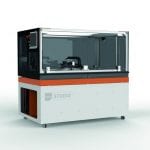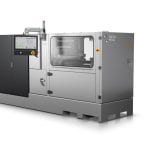Since partnering with shipbuilding company Fincantieri last month, Australian metal AM company Titomic has signed a Material Science Testing (MST) agreement with Fincantieri Australia. The agreement is the first step in evaluating Titomic’s Kinetic Fusion technology’s viability for Fincantieri’s manufacturing processes.
As part of the new agreement, Titomic will conduct various tests on a Fincantieri specified alloy (following ASTM International Standards) using its AM process to achieve desired mechanical and chemical properties. The tests will include hardness, strength, porosity and chemistry analysis tests. The goal of these tests will be to offer insight into the material properties, performance and costs of Titomic’s additive manufacturing process.
“We are pleased to kick off this first project with Fincantieri as part of our MoU,” said Jeff Lang, CTO of Titomic. “We will be producing test samples at our new state of the art facility in Melbourne in order to conduct the stringent tests required. This is the first step towards manufacturing large marine parts on our metal 3D printers of limitless scale.”
As part of the companies’ agreement, Titomic’s technology and operational team recently made a trip to the Riva Trigoso Shipyard in Italy to learn how Fincantieri’s mechanical ship components are designers, developed and produced. Eventually, the aim is to transfer Fincantieri’s marine technology to Australia.
“Titomic’s technology combined with Fincantieri’s technology transfer program to Australia creates the potential to return Australia’s capability in mechanical componentry,” said Sean Costello, Director at Fincantieri Australia. “Our aim is to return high-value jobs to Australia, reduce costs and become sovereign as a shipbuilding nation.”

May 14: Titomic signs MoU with Fincantieri
In a world first for AM adoption by the Marine sector, Titomic signed a MoU to work with Fincantieri to evaluate the potential for the Company’s additive manufacturing process, Titomic Kinetic Fusion, to be used in Fincantieri’s manufacturing activities. Effective immediately and with a 12 months duration, Titomic’s signing with Fincantieri explores the Company’s proprietary processes to complement and improve existing manufacturing process and is the start of a synergistic partnership.
“This agreement with Fincantieri marks a significant milestone for future shipbuilding and industrial scale additive manufacturing,” said Jeff Lang, CEO and CTO of Titomic. “Titomic’s signing with Fincantieri to evaluate our Titomic Kinetic Fusion process will not only add value to existing manufacturing and repair activities, it will lead to the creation of next generation high tech vessels.”
With 20 shipyards across four continents, Fincantieri S.p.A is one of the world’s largest shipbuilding groups and number one by diversification and innovation. It is the leader in cruise ship design and construction, and a reference player in all high-tech shipbuilding industry sectors – from naval to offshore vessels, from high-complexity special vessels and ferries – to mega-yachts, ship repairs and conversions, systems and equipment production, and after-sales services.
Fincantieri also carries out maintenance and refurbishment of cruise ships – a major and growing international industry. The company is also one of the shortlisted bidders for The Future Frigates SEA 5000 program. Titomic was awarded Best Maritime Innovation award at Pacific 2017 International Maritime Exposition. This MoU affirms Titomic’s entrance into the shipbuilding and offshore industries. The initial R&D phase will take place at Titomic’s Melbourne facility.
Dario Deste, Chairman of Fincantieri Australia also commented on the deal: “We are pleased to partner with Titomic, an innovative advanced manufacturing company, to pursue new technological development, continuous improvement and value creation for all our stakeholders. The significance of this partnership examines how we can introduce new manufacturing technologies to make Australia sovereign in advanced naval technology and improve our solutions on the world-wide market.”









